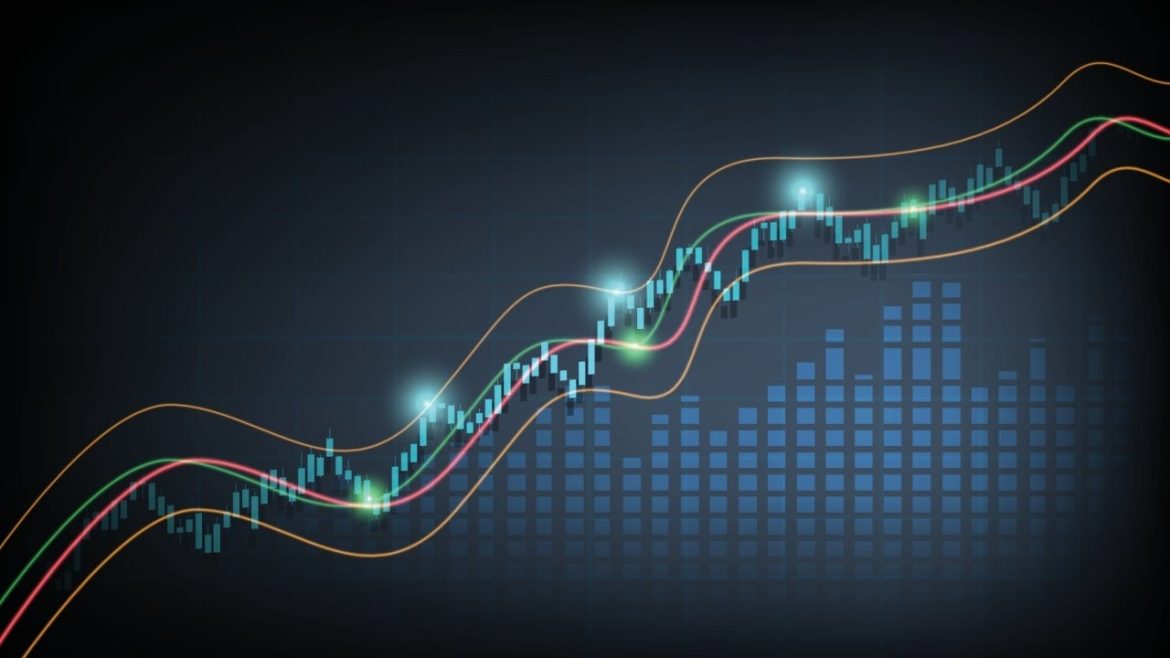Bitcoin’s price movements have long captivated traders and investors, with its volatility presenting both opportunities and challenges. Among the various technical analysis tools used to interpret these movements, Bollinger Bands have emerged as a particularly insightful indicator. Developed by financial analyst John Bollinger, these bands provide a dynamic framework for assessing volatility, identifying potential breakouts, and gauging market sentiment. This analysis explores Bitcoin’s recent price action through the lens of Bollinger Bands, integrating insights from John Bollinger himself and other key market observations.
The Mechanics of Bollinger Bands
Bollinger Bands consist of three main components: the middle band, the upper band, and the lower band. The middle band is typically a 20-day simple moving average (SMA), which serves as the baseline for price movements. The upper and lower bands are calculated by adding and subtracting two standard deviations from the middle band, respectively. This structure allows the bands to adapt to changing market conditions, widening during periods of high volatility and contracting during calmer markets.
The dynamic nature of Bollinger Bands makes them particularly useful for identifying overbought or oversold conditions. When the price touches the upper band, it may indicate that the asset is overbought, while touching the lower band could suggest oversold conditions. Additionally, the bands can help identify potential breakouts when the price moves outside the bands, signaling a strong momentum shift.
Bullish Signals and Breakout Potential
John Bollinger has frequently commented on Bitcoin’s price action, often highlighting bullish signals that suggest upward momentum. In December 2024, Bollinger noted that Bitcoin was positioned for an upward breakout, a prediction that aligned with the cryptocurrency’s subsequent price movements. This bullish sentiment was further supported by the formation of a “W-bottom” pattern, a technical indicator that suggests a potential trend reversal.
The “W-bottom” formation occurs when the price drops to a low, rebounds, falls again to a similar low, and then rises again. This pattern is often interpreted as a sign that selling pressure is diminishing and buyers are stepping in to support the price. The %b indicator, which measures the closing price’s position within the Bollinger Bands, further validated this bottom formation, suggesting that Bitcoin had indeed found a floor.
These bullish signals, combined with the inherent volatility captured by the Bollinger Bands, have led to optimistic predictions for Bitcoin’s price. Some analysts have forecasted a potential rally towards \$130,000 – \$160,000, driven by a combination of technical indicators and macroeconomic factors.
The Importance of Pullbacks and Bearish Scenarios
While bullish signals have dominated much of the recent analysis, it is crucial to acknowledge the potential for pullbacks and bearish scenarios. John Bollinger has cautioned about the possibility of consolidation or a pullback in Bitcoin’s price, particularly after significant surges. This warning highlights the importance of remaining vigilant and considering the possibility of a price correction, even amidst overall bullish sentiment.
A bearish pattern identified by Bollinger indicated a potential downturn, emphasizing the need for traders to be prepared for various market conditions. Pullbacks are a natural part of any asset’s price cycle and can provide opportunities for investors to enter the market at more favorable prices. Understanding these nuances is essential for developing a well-rounded trading strategy.
The Bollinger Squeeze and Its Implications
One of the most intriguing patterns identified through Bollinger Bands is the “Bollinger Squeeze.” This occurs when the bands contract significantly, indicating a period of low volatility. A tight Bollinger Band formation suggests that a significant price movement, either upward or downward, is imminent. This “squeeze” effect essentially stores potential energy, which is then released in the form of a price breakout.
Analysts have noted that Bitcoin has experienced one of the tightest Bollinger Band formations in its history, signaling that a substantial price swing is on the horizon. While the direction of the breakout is uncertain, the squeeze itself suggests that a period of heightened volatility and price discovery is likely to follow. Traders and investors should be prepared for increased market activity and potential rapid price changes.
External Factors Influencing Bitcoin’s Price
Beyond the technical analysis provided by Bollinger Bands, external factors also play a crucial role in shaping Bitcoin’s price trajectory. The Federal Reserve’s monetary policy decisions, particularly regarding interest rates, can significantly impact investor sentiment and risk appetite. Lower interest rates tend to favor riskier assets like Bitcoin, while higher rates can lead to capital outflows from the cryptocurrency market.
Institutional adoption of Bitcoin has also been a significant driver of its price. Companies like MicroStrategy and Metaplanet have injected substantial capital into Bitcoin, reinforcing the narrative of Bitcoin as a treasury asset. This institutional interest not only provides a bullish macro signal but also enhances the overall credibility and stability of the cryptocurrency market.
Conclusion
Bitcoin’s price movements remain a complex and dynamic phenomenon, influenced by a combination of technical indicators and external factors. Bollinger Bands offer a valuable framework for interpreting these movements, providing insights into potential breakouts, reversals, and market sentiment. John Bollinger’s analysis, in particular, has been instrumental in highlighting key patterns and signals within Bitcoin’s price action.
While bullish signals, such as upside breakouts and W-bottom formations, have dominated recent analyses, it is essential to remain aware of potential pullbacks and bearish scenarios. The Bollinger Squeeze further emphasizes the likelihood of a significant price swing, underscoring the need for vigilance and strategic decision-making.
Ultimately, understanding Bollinger Bands and considering external factors will empower investors to navigate Bitcoin’s volatile dance with greater confidence and informed perspective. Bitcoin’s future remains unwritten, but technical analysis provides a compass to navigate its ever-changing landscape. By integrating these insights with a comprehensive understanding of market dynamics, traders and investors can better position themselves to capitalize on the opportunities presented by this enigmatic asset.





